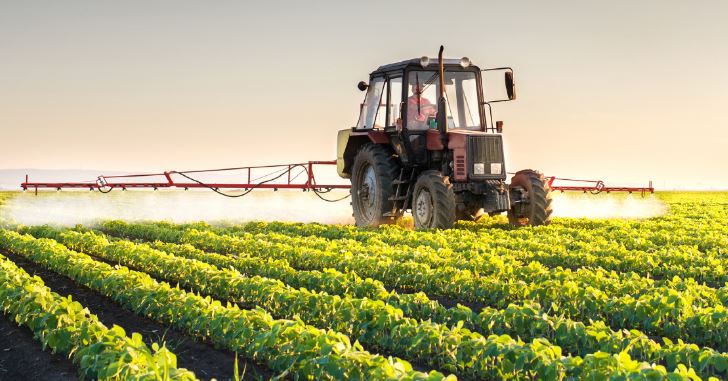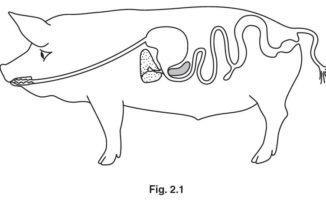Waec Agric Questions Answers 2025 – Objectives and Essay Released.
The Waec Agric Science answer 2025 questions have been released. The West African Examination Council (WAEC) SSCE Agricultural Science objective and theory paper will be written on Thursday, 16th May 2024.
The WAEC Agric exam will start at 9:30 am and end at 12:00 pm. In this post, we will be posting samples of the Waec Agric questions from official Waec Agricultural Science past questions for candidates who will participate in the examination to study and practice.

WAEC Agric Questions and Answers 2025.
PAPER 2 [Essay]
Answer any four questions.
Write your answers on the answer booklet provided.
1. (a) (i) Explain the term agriculture.
(ii) List three industries that utilize cereals as their raw materials.
(b) Outline six problems that hinder the attainment of self-sufficiency in food production in West Africa.
(c) Enumerate five benefits of commercial farming.
2. (a) Differentiate between land ownership by leasehold and land ownership by freehold.
(b) Mention five ways in which non-governmental organizations contribute to agricultural development in West Africa.
(c) State four ways in which rural-urban migration has hindered agricultural development in West Africa.
(d) Mention three socio-economic uses of land.
(e) Explain two ways by which each of the following environmental factors affects agricultural production: i. soil organisms; ii. soil texture.
ANS: (a) Leasehold involves the payment of fees for land used over a stated period of time under
agreed specified conditions WHILE freehold is the outright purchase of the land (permanent ownership)
(c) Ways in which rural-urban migration has hindered agricultural development in West
Africa
– Shortage/ scarcity of farm labour
– Causes high cost of farm labour
– Poor quality of labour in rural areas resulting in low productivity
– Decrease in food production/food insecurity
– Decrease in export
– Inadequate supply of raw materials to agro-industries
– Poor adoption of agricultural innovation due to aging farming population.
3. (a) Explain the term farm mechanization.
(b) List six limitations of farm mechanization in West Africa.
(c) Suggest eight possible ways of encouraging the use of farm mechanization to improve agricultural production in West Africa.
4. (a) Explain the term soil.
(b) List four characteristics of loamy soil.
(c) (i) Draw an annotated diagram of the water cycle.
(ii) List the three types of soil water.
5. (a) Explain each of the following terms as used in crop production:
(i) grafting;
(ii) thinning;
(iii) staking.
(b) State two reasons for adopting each of the crop production activities listed in 4(a).
(c) Mention the botanical names of two species of yam.
(d) State two uses of ginger.
6. (a) (i) Explain the terms line breeding and inbreeding as used in animal improvement.
(ii) State three advantages and three disadvantages of inbreeding.
(b) State four factors that determine the amount of water required by farm animals.
(c) Give four sources of calcium in the diet of livestock.
7. (a) What is fish farming?
(b) Define the following terms as used in fish farming:
(i) stocking rate;
(ii) fingerlings;
(iii) polyculture;
(iv) fishing gears.
(c) List four factors that influence the water requirements of farm animals.
(d) Discuss foot-and-mouth disease under the following headings:
(i) causal agent;
(ii) symptoms;
(iii) control.
8. (a) (i) List the four factors of agricultural production.
(ii) State the reward for each factor you have listed in 8(a)(i).
(b) Outline three functions of the wholesaler in agricultural marketing.
(c) State two objectives of agricultural extension.
(d) Mention five examples of group extension teaching methods.
9. (a) Draw and label the digestive system of a ruminant animal.
(b) Describe the process of digestion in the ruminant animal.
10. (a) List four factors that affect the efficiency of agricultural labour.
(b) Outline four ways in which capital is important in agricultural production.
(c) List five agencies that are involved in agricultural extension programmes in West Africa.
(d) Give three reasons why governments in West Africa should encourage agricultural extension services.
WAEC Agric Objective Answer to WAEC Agricultural Science Objectives Questions 2024.
1. A farmer has a large piece of land on which he grows wheat year after year. What is the name for this type of farming?
A. crop rotation
B. mixed farming
C. monoculture
D. organic farming.

2. Which of the following statements about crop production is Not correct?
A. Onions are commonly grown in the rainforest zones.
B. Yam, cocoyam, and cassava are grown in both the rainforest and the savanna regions.
C. Some foreign vegetable crops are grown in and around urban centres.
D. Carrots are commonly grown in the savanna and moist vegetation belts.
3. The device which helps to regulate heat in an incubator is the
A. thermometer.
B. hygrometer.
C. insulator.
D. thermostat.
4. Which of the following is a disadvantage of surface irrigation?
A. The quantity of water lost is high.
B. Water is evenly distributed over the farmland
C. It is very cheap to operate.
D. The system is suitable for paddy rice cultivation.
5. Fine soil tilth is produced by the use of
A. Harrow.
B. Plough.
C. Ridger.
D. Mower.
6. The problems of farm mechanization in West Africa include the following
except
A. reduction of farm drudgery.
B. small farm holdings.
C. poverty of farmers.
D. poor topography.
7.
Keep following, more questions and answers will be added soon.
If you’re searching for waec agricultural science expo – runs, note that there is nothing like that on the internet. WEAC exam question papers are guarded securely by the council.
